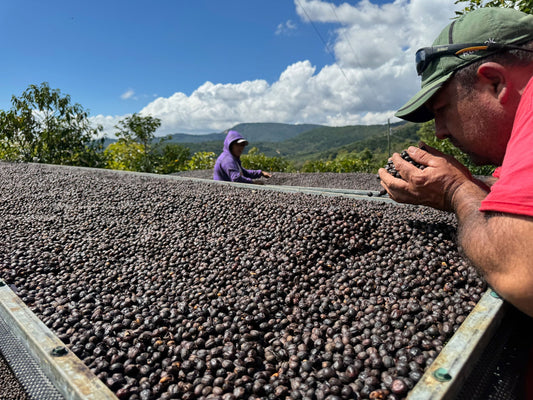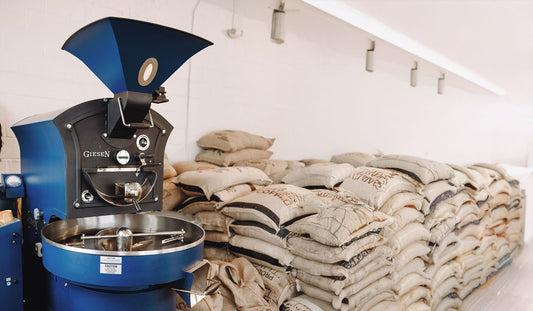Natural processing, also known as dry processing, is one of the oldest methods of coffee processing. It's straightforward - after harvesting, the coffee cherries are laid out to dry with the fruit still on the bean. This can be done several ways - on patios, raised beds, or using mechanical dryers. The key here is to dry the cherries evenly and to the right level of moisture, around 10-12%.
Patio Drying: Here, cherries are spread out on large concrete or brick patios to dry under the sun. It’s a method favored in many Brazilian farms due to the country's vast space and sunny climate. The cherries are turned regularly to ensure even drying, which is a labor-intensive process that can take up to two weeks or more.
Raised Bed Drying: This method involves spreading the cherries on raised beds or screens, allowing air to circulate freely around them. Hence, it’s preferred in regions like Ethiopia and Rwanda, where humidity is generally higher. Raised beds also help prevent mold and fermentation, ensuring a cleaner taste profile in a cup. In our opinion, the use of beds also facilitates better monitoring and sorting of cherries during drying, resulting in an overall superior coffee.
Mechanical Dryers: Sometimes the climate doesn’t cooperate, and that’s where mechanical dryers come in. They can mimic the gentle heat of the sun, ensuring that cherries dry evenly and quickly, without the risk of spoilage. This method is a game-changer in regions with unpredictable weather, where farmers cannot bear the risk of rain-induced spoilage. While more energy-intensive, mechanical drying is still not a primary choice for many specialty coffee farmers.
Flavor Characteristics
Natural processing can take the flavor of coffee in numerous directions. The fruit’s sugars and acids have more time to interact with the bean, leading to a cup that’s often more complex and fruity compared to other popular methods. Expect flavor notes ranging from sweet berry to rich chocolate, with a full body and smooth mouthfeel. However, it's a double-edged sword, because the risk of over-fermentation can easily lead to unwanted funky or boozy notes in a coffee.
The Good and The Bad
Sustainability: Natural processing uses less water than other methods, which is a significant plus for the environment. However, it takes more land to spread out the cherries for drying, and if not managed responsibly, it can even lead to soil degradation.
Quality and Consistency: Achieving consistent quality can be challenging with natural processing, a fact that every farmer is familiar with. The risk of over-fermentation or uneven drying can affect the batch, which can impact the coffee’s market value. On the flip side, when executed correctly, it can produce exceptional coffees, highly prized for their depth of flavor and complexity.
The Bottom Line
Natural processing is basically a slow dance with nature. It's about balance, understanding the environment, and working within its constraints. The processing method a coffee-region chooses reflects its microclimate, infrastructure, and beliefs. As consumers, when we pick a naturally processed coffee, we’re tasting the result of all that goes into this intricate and labor intensive process, mastered over many generations.
Sustainability-wise, the natural processing method is a step in the right direction, with lower water usage and potential for lesser environmental impact. However, like all agricultural practices, it requires careful management to ensure that it contributes positively to the environment and the communities involved.



